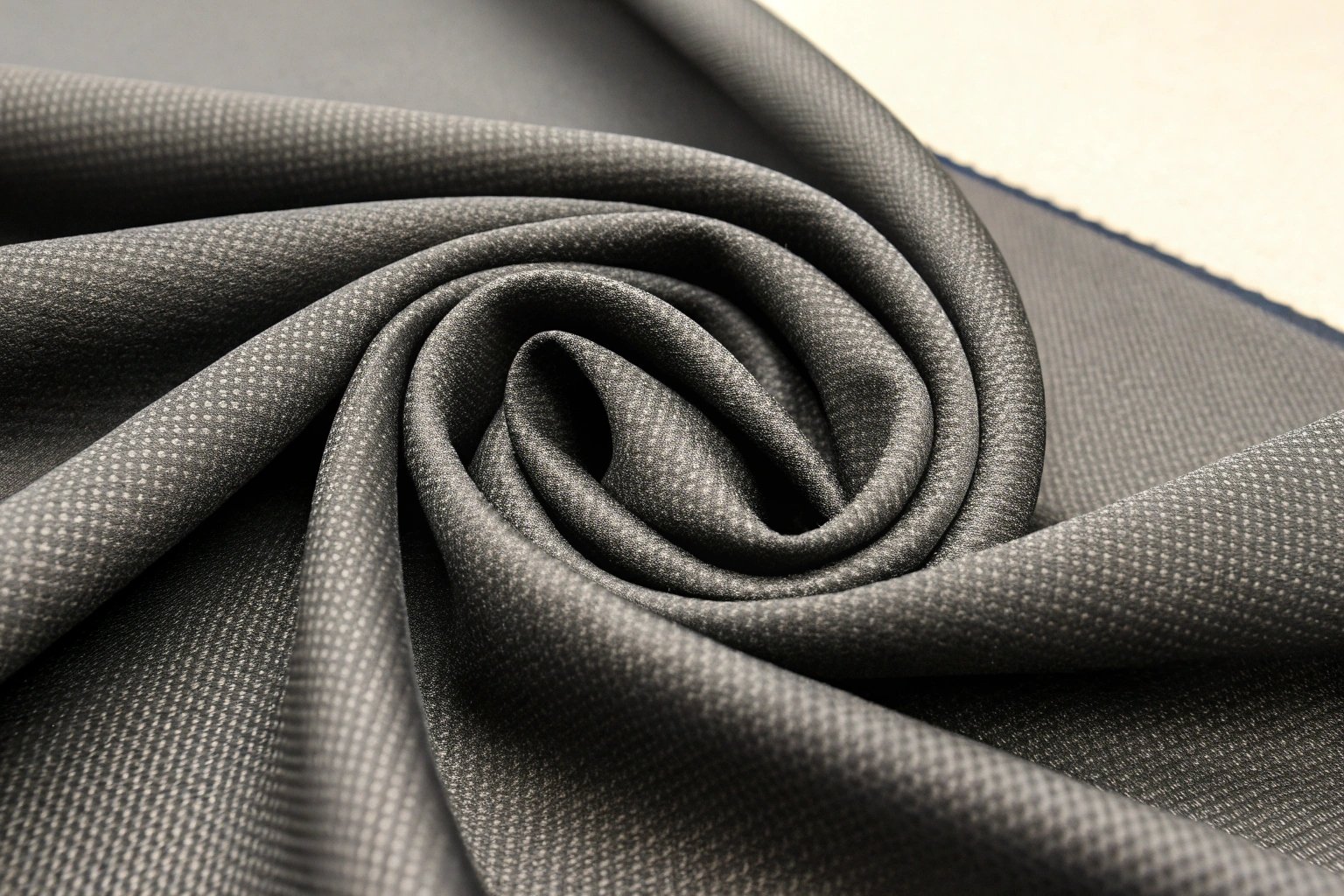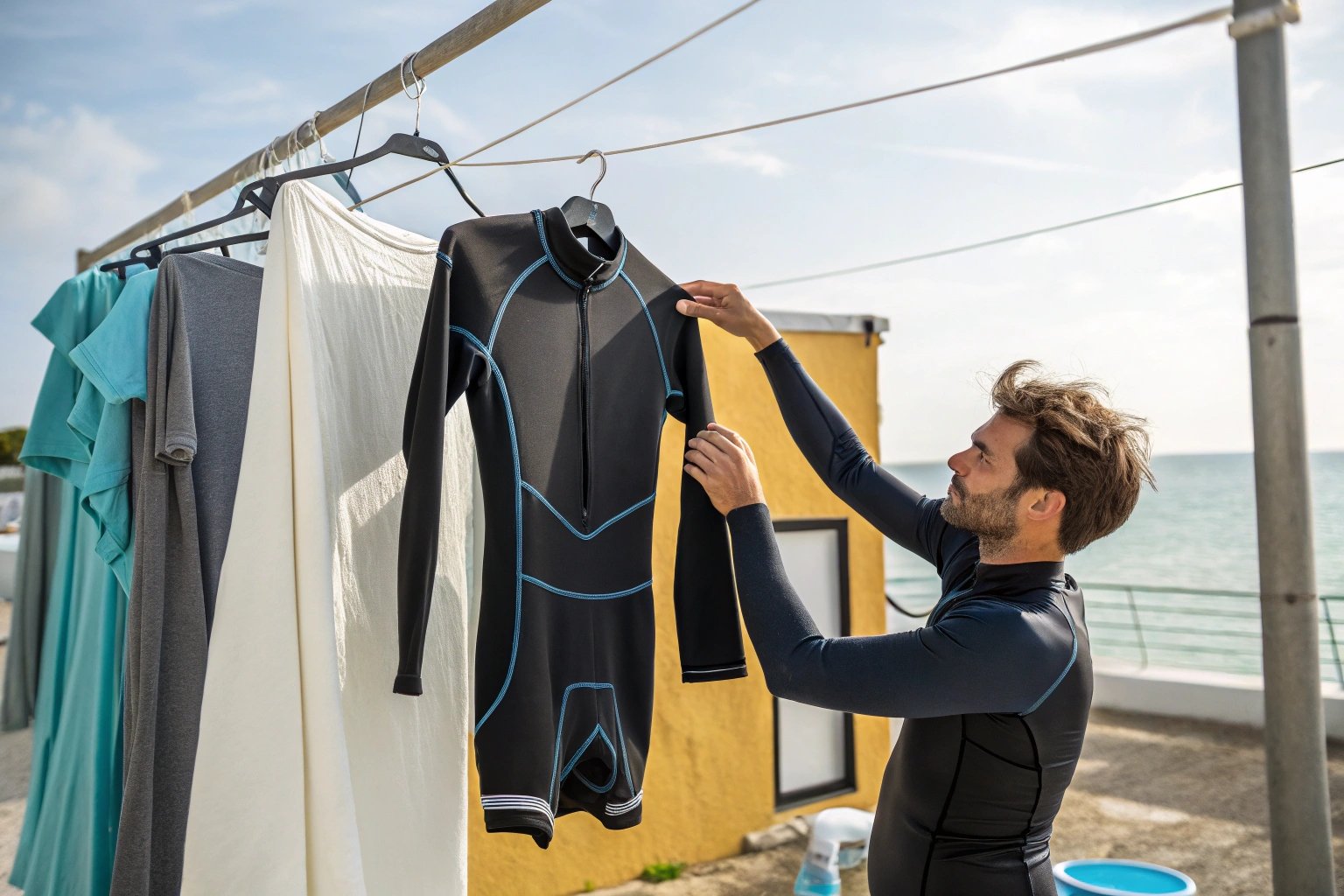Neoprene fabric has become an essential material in a variety of industries due to its versatility, durability, and unique properties. From wetsuits to fashion, neoprene’s functionality and design possibilities are unmatched. But what exactly makes neoprene so special, and why should it be on your radar in 2025? Let’s dive into the world of neoprene fabric and explore everything you need to know.

What are the disadvantages of neoprene fabric?
While neoprene offers numerous benefits, it also has a few disadvantages that should be considered before choosing it for a project.
Lack of Breathability
Neoprene’s closed-cell structure makes it water-resistant and insulating, but it also means the fabric is not breathable. This can cause discomfort when worn for long periods, especially in warmer weather or during physical activity.
Why It’s a Drawback: Lack of breathability can lead to moisture buildup, causing discomfort and overheating.
Heavy and Bulky
Compared to other fabrics like cotton or synthetic materials, neoprene can be relatively heavy and bulky. This is especially noticeable when used in large garments like jackets or outerwear.
Why It’s a Drawback: The weight of neoprene may restrict movement and make it less suitable for activewear or lightweight clothing.
Cost
Neoprene is generally more expensive than regular fabrics due to its manufacturing process and the special properties it provides. This can increase the overall production cost of garments made with neoprene.
Why It’s a Drawback: Higher costs may make neoprene less appealing for brands looking to keep production costs low or produce more budget-friendly items.
Odor Retention
Since neoprene is not very breathable, it tends to trap moisture, which can cause odors to linger, particularly after activities like swimming, exercising, or wearing the material for extended periods.
Why It’s a Drawback: Odor retention can be a concern for activewear and swimwear, where frequent washing is required to maintain freshness.
What are the qualities of neoprene fabric?
Neoprene fabric is known for its unique blend of properties that make it suitable for various industries, from fashion to sports. Here are the key qualities of neoprene fabric:

Durability
Neoprene is a highly durable fabric, resistant to wear and tear, and holds up well to environmental stressors like moisture, heat, and chemicals.
Why It’s Great: The fabric’s durability makes it ideal for heavy-duty applications like wetsuits, industrial uses, and protective gear.
Insulating Properties
Neoprene’s closed-cell structure traps air, offering excellent insulation. This makes it a great material for cold-weather wear, such as wetsuits and jackets, as it provides warmth without the added bulk.
Why It’s Great: The insulating properties help maintain body temperature, making it perfect for activewear and outdoor clothing in cooler conditions.
Flexibility and Comfort
Neoprene is highly flexible, allowing for a snug fit that moves with the body. It provides a comfortable, second-skin feel, which is why it’s so widely used in sportswear, such as leggings, wetsuits, and athletic gear.
Why It’s Great: Its stretchability ensures a comfortable fit, making it suitable for activities that require freedom of movement.
Water-Resistant
Neoprene is naturally water-resistant, which makes it a popular choice for products that are exposed to moisture, such as wetsuits, jackets, and laptop sleeves.
Why It’s Great: Its resistance to water makes it ideal for water sports and any situation where moisture protection is necessary.
Shape Retention
Neoprene fabric retains its shape, providing structure without being stiff. This makes it ideal for outerwear and accessories that require both form and function.
Why It’s Great: The fabric’s ability to hold its shape while remaining flexible makes it an excellent choice for creating structured garments that maintain a clean, tailored look.
How do you care for neoprene fabric?

Caring for neoprene is essential to maintaining its performance and extending its lifespan. Here’s how to properly care for your neoprene garments:
Hand Wash or Gentle Cycle
To maintain the fabric’s integrity, it’s best to hand wash neoprene items with cold water and a mild detergent. If machine washing is preferred, use the gentlest cycle and cold water.
Why It’s Important: Washing neoprene at high temperatures or with harsh detergents can damage the material, causing it to lose its flexibility and shape.
Avoid Direct Heat
Neoprene should never be exposed to direct heat, such as a dryer or ironing. High temperatures can cause the fabric to warp, lose its elasticity, or degrade.
Why It’s Important: Air-drying is the safest option. Lay neoprene items flat to dry, away from direct sunlight or heat sources.
Store Properly
Store neoprene items in a cool, dry place, avoiding folding or cramming them into tight spaces. Hanging is the best option for garments like jackets and wetsuits to help them retain their shape.
Why It’s Important: Proper storage prevents creases, deformations, or damage caused by pressure and heat.
What is so special about neoprene?
Neoprene is a unique material that stands out due to its combination of durability, flexibility, and specialized properties. Here’s what makes it special:
Multi-Functional Use
Neoprene is used in a wide range of industries, from fashion to medical devices, and even in industrial applications. Its ability to provide insulation, flexibility, and water resistance makes it suitable for everything from wetsuits and activewear to laptop sleeves and automotive seals.
Why It’s Special: Neoprene’s versatility makes it indispensable in several markets, from fashion to engineering.
Eco-Friendly Options
With increasing environmental concerns, neoprene manufacturers are now producing eco-friendly versions of neoprene. These options are made from sustainable materials or incorporate recycling processes to reduce the material’s impact on the environment.
Why It’s Special: As sustainability becomes a key concern in the fashion and textile industries, eco-friendly neoprene is gaining traction as a more environmentally conscious alternative.
Innovation in Design
Neoprene’s ability to hold its shape while offering stretch and comfort makes it ideal for designers who want to create structured yet flexible garments. The material’s modern, sleek look has made it a staple in high-fashion collections and sportswear alike.
Why It’s Special: Neoprene continues to inspire design innovation, providing endless possibilities for creating both functional and fashionable items.
Conclusion
Neoprene fabric is a remarkable material that offers a range of benefits, from durability and flexibility to insulation and water resistance. Whether you’re designing high-performance sports gear, stylish outerwear, or innovative tech accessories, neoprene offers a versatile solution that combines both function and fashion. Understanding the qualities, care, and applications of neoprene will help you make the most of this unique material, whether you’re crafting for practical use or high-end design.
As the fabric continues to evolve and eco-friendly alternatives emerge, neoprene is set to remain a key material in 2025 and beyond, meeting the needs of a wide range of industries while offering new opportunities for innovation.

